مقالات زیر توسط تیم پژوهشی گرافنیکس در ژورنال های علمی معتبر به چاپ رسیده است. میزان ارجاعات به مقالات و سطح کیفی مجلات نشان دهنده تخصص ماست. به کمک ابزار کنار صفحه می توانید مقالات را برحسب نویسنده، سال، موضوع، و مجله فیلتر کنید.
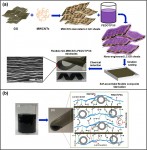
The prospect of developing multifunctional flexible three-dimensional (3D) architectures based on integrative chemistry for lightweight, foldable, yet robust, electronic components that can turn the many promises of graphene-based devices into reality is an exciting direction that has yet to be explored. Herein, inspired by nature, we demonstrate that through a simple, yet novel solvophobic self-assembly processing approach, nacre-mimicking, layer-by-layer grown, hybrid composite materials (consisting of graphene oxide, carbon nanotubes, and conducting polymers) can be made that can incorporate many of the exciting attributes of graphene into real world materials. The as-produced, self-assembled 3D multifunctional architectures were found to be flexible, yet mechanically robust and tough (Young’s modulus in excess of 26.1 GPa, tensile strength of around 252 MPa, and toughness of 7.3 MJ m–3), and exhibited high native electrical conductivity (38700 S m–1) and unrivalled volumetric capacitance values (761 F cm–3) with excellent cyclability and rate performance.

Characterization of covalently-grafted polyisocyanate chains onto graphene oxide for polyurethane composites with improved mechanical properties
Polyisocyanate-functionalized graphene oxide (PI–GO) was synthesized at various functionalization reaction times of 24, 48 and 72 h. The modified GO sheets were characterized by X-ray photo electron spectroscopy, Fourier transform infrared spectroscopy, Raman spectroscopy, thermal gravimetric analysis, and atomic force microscope. It was shown that PI polymer has been successfully grafted on the surface of GO through covalent bonding between the hydroxyl and carboxyl groups of the GO with isocyanate groups of PI. The results obtained from X-ray diffraction analysis also revealed that the interlayer distance of the GO increased after modification. The highest amount of PI grafted on the GO surface was obtained after a 72 h modification reaction. The modified and unmodified GO sheets were then incorporated into a polyurethane (PU) matrix to prepare PU/PI–GO and PU/GO composites. It was found that addition of only 0.1 wt% PI–GO significantly increased the Young’s modulus, work of fracture, stress at break, and elongation at break of PU/PI–GO composite as compared to the neat PU sample and the PU/GO composite.
Covalently-grafted graphene oxide nanosheets to improve barrier and corrosion protection properties of polyurethane coatings
Surface modification of graphene oxide (GO) has been performed by grafting of polyisocyanate (PI) resin. Results obtained from X-ray photo electron spectroscopy, thermal gravimetric analysis and X-ray diffraction analysis revealed that the PI resin chains were successfully attached onto the surface of GO nanosheets through covalent bonding with hydroxyl and carboxylic groups leading to amides and carbamate esters bonds formation. Subsequently, the PI functionalized GO sheets were incorporated into the polyurethane (PU) matrix. The X-ray diffraction analysis showed that surface modification of GO nanosheets with PI enhanced the level of exfoliation of PI–GO in the PU matrix. Scanning electron microscope analysis showed the enhanced interaction between GO and PU matrix after functionalization by PI resin. The electrochemical impedance spectroscopy and salt spray tests were performed to reveal the effects of addition of 0.1 wt.% GO and PI–GO nanosheets on the corrosion protection properties of the PU coating. Also, the adhesion loss of the coatings was obtained by pull-off adhesion test after 30 days immersion in 3.5 wt.% NaCl solution. It was found that incorporation of 0.1 wt.% surface modified GO nanosheets into the PU matrix resulted in significant improvement of the coating corrosion protection properties and ionic resistance.

Improvements in Dispersion of Nano-Silver in MgB2 Matrix through Graphene Oxide Net
The effects of graphene oxide (GO) addition on the dispersion of nanosilver (Ag) in an MgB2 matrix were studied using bulk samples prepared through a diffusion process. The influence of the dispersion of Ag and Ag/GO particles on the critical current density (Jc) of MgB2 was also investigated. GO has emerged as an excellent dopant which can significantly improve both the low- and high-field performance of MgB2 due to its capability to improve intergrain connectivity (GO) and inter- and intragrain pinning (GO and AgMg). The addition of nanosize Ag particles also results in an improvement of vortex pinning, and at the same time, it offers the advantage of preventing the loss of Mg during the sintering process. It is found that the dispersion of nanosilver in the presence of GO results in significant improvements in the critical current density in MgB2, particularly at high magnetic fields, due to improved intergrain connectivity and flux pinning. The use of the GO net as a platform for doping MgB2 in our case with Ag yielded a 10-fold-better critical current density (Jc) than standard Ag doping at 9 T and 5 K. Even without sophisticated processes, we obtained a Jc result of 104 A/cm2 at 9 T and 5 K, which is one of the best ever achieved.

Graphene-oxide stabilization in electrolyte solutions using hydroxyethyl cellulose for drug delivery application
Stabilization of graphene oxide (GO) in physiological solution is performed using hydroxyethyl cellulose (HEC) to make the resultant nanohybrid suitable for targeted drug delivery purposes. Short and long term stability of GO suspensions with different ionic strengths were assessed using ultraviolet–visible spectroscopy (UV–vis), atomic force microscopy (AFM) and zeta potential measurements. Results depicted that HEC effectively stabilized GO in electrolyte solutions and the mechanism of stabilization appeares to be depended on HEC content. Drug loading and release behavior of folic acid (FA) as a model drug, from GO–HEC nanohybrid were studied to assess its application in drug delivery systems. Results showed the nanohybrid could be highly loaded by folic acid. Moreover, HEC content in the nanohybrid played an important role in final application to make it applicable either as a carrier for controllable drug release or as a folate-targeted drug carrier. In addition, according to cytotoxicity results, the nanohybrid showed good biocompatibility which indeed confirms its potential application as a drug carrier.

Liquid crystalline graphene oxide/PEDOT: PSS self-assembled 3D architecture for binder-free supercapacitor electrodes
Binder-free self-assembled 3D architecture electrodes have been fabricated by a novel convenient method. Liquid crystalline graphene oxide was used as precursor to interact with poly(3,4-ethylene-dioxythiophene):poly(styrenesulfonate) (PEDOT:PSS) in dispersion in order to form a conductive polymer entrapped, self-assembled layer-by-layer structure. This advanced network containing PEDOT:PSS enabled us to ascribe the superior electrochemical properties of particular graphene sheets. This layer-by-layer self-assembled 3D architecture of best performing composite (reduced graphene oxide–PEDOT:PSS 25) showed excellent electrochemical performance of 434 F g−1 through chemical treatment. To highlight these advances, we further explored the practicality of the as-prepared electrode by varying the composite material content. An asymmetric supercapacitor device using aqueous electrolyte was also studied of this same composite. The resulting performance from this set up included a specific capacitance of 132 F g−1. Above all, we observed an increase in specific capacitance (19%) with increase in cycle life emphasizing the excellent stability of this device.
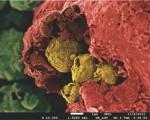
Liquid Crystalline Dispersions of Graphene‐Oxide‐Based Hybrids: A Practical Approach towards the Next Generation of 3D Isotropic Architectures for Energy Storage Applications
We report the use of the spray pyrolysis method to design self-assembled isotropic ternary architectures made up of reduced graphene oxide (GO), functionalized multiwalled carbon nanotubes, and nickel oxide nanoparticles for cost-effective high-performance supercapacitor devices. Electrodes fabricated from this novel ternary system exhibit exceptionally high capacitance (2074 Fg−1) due to the highly conductive network, synergistic link between GO and carbon nanotubes and achieving high surface area monodispersed NiO decorated rGO/CNTs composite employing the liquid crystallinity of GO dispersions. To further assess the practicality of this material for supercapacitor manufacture, we assembled an asymmetric supercapacitor device incorporating activated carbon as the anode. The asymmetric supercapacitor device showed remarkable capacity retention (>96%), high energy density (23 Wh kg−1), and a coulombic efficiency of 99.5%.

Graphene oxide‐induced polymerization and crystallization to produce highly conductive polyaniline/graphene oxide composite
Graphene oxide (GO)–polyaniline (PANI) composite is synthesized by in situ polymerization of aniline in the presence of GO as oxidant, resulting in highly crystalline and conductive composite. Fourier transform infrared spectrum confirms aniline polymerization in the presence of GO without using conventional oxidants. Scanning electron microscopic images show the formation of PANI nanofibers attached to GO sheets. X-ray diffraction (XRD) patterns indicate the presence of highly crystalline PANI. The sharp peaks in XRD pattern suggest GO sheets not only play an important role in the polymerization of aniline but also in inducing highly crystalline phase of PANI in the final composite. Electrical conductivity of doped GO–PANI composite is 582.73 S m−1, compared with 20.3 S m−1 for GO–PANI obtained by ammonium persulfate assisted polymerization. The higher conductivity appears to be the result of higher crystallinity and/or chemical grafting of PANI to GO, which creates common conjugated paths between GO and PANI.

High-Performance Multifunctional Graphene Yarns: Toward Wearable All-Carbon Energy Storage Textiles
The successful commercialization of smart wearable garments is hindered by the lack of fully integrated carbon-based energy storage devices into smart wearables. Since electrodes are the active components that determine the performance of energy storage systems, it is important to rationally design and engineer hierarchical architectures atboth the nano- and macroscale that can enjoy all of the necessary requirements for a perfect electrode. Here we demonstrate a large-scale flexible fabrication of highly porous high-performance multifunctional graphene oxide (GO) and rGO fibers and yarns by taking advantage of the intrinsic soft self-assembly behavior of ultralarge graphene oxide liquid crystalline dispersions. The produced yarns, which are the only practical form of these architectures for real-life device applications, were found to be mechanically robust (Young’s modulus in excess of 29 GPa) and exhibited high native electrical conductivity (2508 ± 632 S m–1) and exceptionally high specific surface area (2605 m2 g–1 before reduction and 2210 m2 g–1 after reduction). Furthermore, the highly porous nature of these architectures enabled us to translate the superior electrochemical properties of individual graphene sheets into practical everyday use devices with complex geometrical architectures. The as-prepared final architectures exhibited an open network structure with a continuous ion transport network, resulting in unrivaled charge storage capacity (409 F g–1 at 1 A g–1) and rate capability (56 F g–1 at 100 A g–1) while maintaining their strong flexible nature.
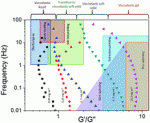
Graphene oxide dispersions: tuning rheology to enable fabrication
Here, we show that graphene oxide (GO) dispersions exhibit unique viscoelastic properties, making them a new class of soft materials. The fundamental insights accrued here provide the basis for the development of fabrication protocols for these two-dimensional soft materials, in a diverse array of processing techniques.
Intumescent flame retardant polyurethane/reduced graphene oxide composites with improved mechanical, thermal, and barrier properties
Intumescent flame retardant polyurethane (IFRPU) composites were prepared in the presence of reduced graphene oxide (rGO) as synergism, melamine, and microencapsulated ammonium polyphosphate. The composites were examined in terms of thermal stability (both under nitrogen and air), electrical conductivity, gas barrier, flammability, mechanical, and rheological properties. Wide-angle X-ray scattering and scanning electron microscopy indicated that rGO are well-dispersed and exfoliated in the IFRPU composites. The limiting oxygen index values increased from 22.0 to 34.0 with the addition of 18 wt% IFR along with 2 wt% rGO. Moreover, the incorporation of rGO into IFRPU composites exhibited excellent antidripping properties as well as UL-94 V0 rating. The thermal stability of the composites enhanced. This was attributed to high surface area and good dispersion of rGO sheets induced by strong interactions between PU and rGO. The oxygen permeability, electrical, and viscoelasticity measurements, respectively, demonstrated that rGO lead to much more reduction in the gas permeability (by ~90 %), high electrical conductivity, and higher storage modulus of IFRPU composites. The tensile strength, modulus, and shore A remarkably improved by the incorporation of 2.0 wt% of rGO as well.
Spontaneous exfoliation of graphite oxide in polar aprotic solvents as the route to produce graphene oxide – organic solvents liquid crystals
It is highly desirable for many applications including liquid crystal formation to have non-aqueous dispersion of graphene oxide (GO). Here, we report our findings on spontaneous exfoliation of graphite oxide flakes into GO in the general class of polar aprotic solvents, which similar to water, induce chemical transformations in GO. We further proposed solvent exchange method as a complementary step to widen the range of organic dispersing media for GO. Having dispersions of very large GO particles results in lyotropic nematic liquid crystalline phases formation for all those solvents at very low GO concentration (typically 0.1 wt%). Suspensions with liquid crystalline phases of GO, provide a basis for fabrication of highly ordered and conductive graphene-based composite materials. For a polymer–graphene composite with layered structure, an exceptionally high electrical conductivity (1050 S m−1) is obtained using liquid crystalline GO dispersion in the polymer solution.
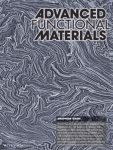
Scalable One‐Step Wet‐Spinning of Graphene Fibers and Yarns from Liquid Crystalline Dispersions of Graphene Oxide: Towards Multifunctional Textiles
Key points in the formation of liquid crystalline (LC) dispersions of graphene oxide (GO) and their processability via wet-spinning to produce long lengths of micrometer-dimensional fibers and yarns are addressed. Based on rheological and polarized optical microscopy investigations, a rational relation between GO sheet size and polydispersity, concentration, liquid crystallinity, and spinnability is proposed, leading to an understanding of lyotropic LC behavior and fiber spinnability. The knowledge gained from the straightforward formulation of LC GO “inks” in a range of processable concentrations enables the spinning of continuous conducting, strong, and robust fibers at concentrations as low as 0.075 wt%, eliminating the need for relatively concentrated spinning dope dispersions. The dilute LC GO dispersion is proven to be suitable for fiber spinning using a number of coagulation strategies, including non-solvent precipitation, dispersion destabilization, ionic cross-linking, and polyelectrolyte complexation. One-step continuous spinning of graphene fibers and yarns is introduced for the first time by in situ spinning of LC GO in basic coagulation baths (i.e., NaOH or KOH), eliminating the need for post-treatment processes. The thermal conductivity of these graphene fibers is found to be much higher than polycrystalline graphite and other types of 3D carbon based materials.
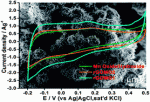
In situ engineering of urchin-like reduced graphene oxide–Mn2O3–Mn3O4 nanostructures for supercapacitors
We report the use of a spray pyrolysis method to synthesize high surface area (BET surface area of 139 m2 g−1) self-organized, micron sized urchin-like composites made up of reduced graphene oxide and needle-shaped manganese oxide (rGO–Mn2O3–Mn3O4). Maximum capacitances of 425 Fg−1 at 5 mV s−1 from a three electrode set up and 133 Fg−1 at a current density of 0.2 Ag−1 were recorded using an asymmetric two electrode set up with graphene as the anode. The composite material also showed a capacitance retention of 83% over 1000 cycles. We attribute this remarkable performance to the high specific surface area due to the urchin-like hollow structures and synergy between the manganese oxide and reduced graphene oxide materials within the composite. Furthermore, this synthesis technique can be exploited further in the bulk synthesis of cost effective graphene–metal oxide hybrid materials for energy storage applications.
A significant improvement in both low- and high-field performance of MgB2 superconductors through graphene oxide doping
The effects of graphene oxide (GO) doping on the superconducting properties of MgB2 were studied using bulk samples made by the diffusion method. Homogeneous dispersions of GO in tetrahydrofuran were obtained through a novel synthesis method, which is then chemically doped with MgB2. It was found that GO doping significantly improves the critical current density, under both low and high magnetic fields, which distinguishes GO from all the other elements doped into MgB2 so far.
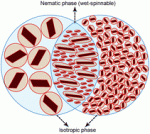
Formation and processability of liquid crystalline dispersions of graphene oxide
Rational control over the formation and processability, and consequently final properties of graphene oxide liquid crystalline dispersions has been a long-standing goal in the development of bottom-up device fabrication processes. Here we report, the principal conditions through which such levels of control can be exercised to fine-tune dispersion properties for further processing.
Self-aligned graphene polymer nanocomposites
Highly-oriented graphene polymer nanocomposites are produced from an aqueous dispersion of graphene oxide in polyurethane latex followed by chemical reduction to form graphene sheets.
Highly aligned, ultralarge-size reduced graphene oxide/polyurethane nanocomposites: mechanical properties and moisture permeability
Polyurethane (PU) nanocomposite films containing highly-aligned graphene sheets are produced. Aqueous dispersion of ultralarge-size graphene oxide (GO) is in situ reduced in waterborne polyurethane, resulting in fine dispersion and high degree of orientation of graphene sheets, especially at high graphene contents. The PU/reduced GO nanocomposites present remarkable 21- and 9-fold increases in tensile modulus and strength, respectively, with 3 wt.% graphene content. The agreement between the experiments and theoretical predictions for tensile modulus proves that the graphene sheets are indeed dispersed individually on the molecular scale and oriented in the polymer matrix to form a layered structure. The moisture permeability of the nanocomposites presents a systematic decrease with increasing graphene content, clearly indicating the impermeable graphene sheets acting as moisture barrier. The synergy arising from the very high aspect ratio and horizontal alignment of the graphene sheets is responsible for this finding.
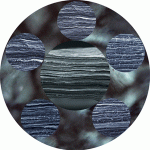
Organic Solvent-Based Graphene Oxide Liquid Crystals: A Facile Route toward the Next Generation of Self-Assembled Layer-by-Layer Multifunctional 3D Architectures
We introduce soft self-assembly of ultralarge liquid crystalline (LC) graphene oxide (GO) sheets in a wide range of organic solvents overcoming the practical limitations imposed on LC GO processing in water. This expands the number of known solvents which can support amphiphilic self-assembly to ethanol, acetone, tetrahydrofuran, N-dimethylformamide, N-cyclohexyl-2-pyrrolidone, and a number of other organic solvents, many of which were not known to afford solvophobic self-assembly prior to this report. The LC behavior of the as-prepared GO sheets in organic solvents has enabled us to disperse and organize substantial amounts of aggregate-free single-walled carbon nanotubes (SWNTs, up to 10 wt %) without compromise in LC properties. The as-prepared LC GO-SWNT dispersions were employed to achieve self-assembled layer-by-layer multifunctional 3D hybrid architectures comprising SWNTs and GO with unrivalled superior mechanical properties (Young’s modulus in excess of 50 GPa and tensile strength of more than 500 MPa).

Enhanced Hydrogen Storage in Graphene Oxide-MWCNTs Composite at Room Temperature
High hydrogen capacity (up to 2.6 wt%) is reported for highly aligned structures of Graphene oxide-Multiwalled carbon nanotubes composite at room temperature. It is demonstrated that the scalable liquid crystal route can be employed as a new method to prepare unique 3-D framework of graphene oxide layers with proper interlayer spacing as building blocks for cost-effective high-capacity hydrogen storage media. The strong synergistic effect of the intercalation of MWCNTs as 1-D spacers within graphene oxide frameworks resulted in unrivalled high hydrogen capacity at ambient temperature. The mechanisms involved in the intercalation procedure are fully discussed. The main concept behind intercalating one-dimensional spacers in between giant GO sheets represents a versatile and highly scalable route to fabricate devices with superior hydrogen uptake.
Enhancement of dispersion and bonding of graphene-polymer through wet transfer of functionalized graphene oxide
Dispersion of nanomaterials in polymeric matrices plays an important role in determining the final properties of the composites. Dispersion in nano scale, and especially in single layers, provides best opportunity for bonding. In this study, we propose that by proper functionalization and mixing strategy of graphene its dispersion, and bonding to the polymeric matrix can be improved. We then apply this strategy to graphene-epoxy system by amino functionalization of graphene oxide (GO). The process included two phase extraction, and resulted in better dispersion and higher loading of graphene in epoxy matrix. Rheological evaluation of different graphene-epoxy dispersions showed a rheological percolation threshold of 0.2 vol% which is an indication of highly dispersed nanosheets. Observation of the samples by optical microscopy, scanning electron microscopy (SEM), and atomic force microscopy (AFM), showed dispersion homogeneity of the sheets at micro and nano scales. Study of graphene-epoxy composites showed good bonding between graphene and epoxy. Mechanical properties of the samples were consistent with theoretical predictions for ideal composites indicating molecular level dispersion and good bonding between nanosheets and epoxy matrix.
SELF-ALIGNED GRAPHENE POLYMER NANOCOMPOSITES

Self-alignment and high electrical conductivity of ultralarge graphene oxide/polyurethane nanocomposites
Polyurethane (PU)-based composite films containing highly aligned graphene sheets are produced through an environmentally benign process. An aqueous liquid crystalline dispersion of graphene oxide (GO) is in situ reduced in PU, resulting in a fine dispersion and a high degree of orientation of graphene sheets. The PU particles are adsorbed onto the surface of the reduced graphene oxide (rGO), and the rGO sheets with a large aspect ratio of over 10 000 tend to self-align during the film formation when the graphene content is high enough, say more than 2 wt%. The resulting composites show excellent electrical conductivity with an extremely low percolation threshold of 0.078 vol%, which is considered one of the lowest values ever reported for polymer composites containing graphene. The electrical conductivity of the composites with high graphene contents presents significant anisotropy due to the preferential formation of conductive networks along the in-plane direction, another proof of the existence of the self-aligned, layered structure.
Molecular level dispersion of graphene in polymer matrices using colloidal polymer and graphene
A novel and environmentally friendly method based on mixing of colloidal polymer particles and graphene sheets has been developed. It is found that colloidal polymers can be employed to stabilize graphene oxide (GO) sheets during reduction to graphene. Adsorption of polymer particles at the surface of graphene layers seems to be underlying mechanism of stabilization of graphene sheets. Surface polarity of the polymer particles is crucial for the successful stabilization of graphene layers. Presence of colloidal particles at the surface of graphene prohibits restacking and agglomeration of nanolayers, resulting in fine dispersion of graphene throughout the polymeric matrix. Formation of strong bond between polar segments of the polymer chain and oxygen groups of graphene sheets generates a strong interface improving final properties of the composites. Inclusion of merely 2 wt% of graphene into an acrylic resin resulted in an increase of 522% and 242% in modulus and hardness, respectively.

Globular reduced graphene oxide-metal oxide structures for energy storage applications
In this work, we employed an in situspray pyrolysis approach to fabricate metal oxide-graphene composites with highly porous morphologies. The materials exhibited unique globular structures comprising metal oxide nanoparticles embedded between graphene sheets with high capacitance.
Improved electrical and optical characteristics of transparent graphene thin films produced by acid and doping treatments
New thermal and chemical schemes, which include (i) a modified thermal treatment, (ii) acid treatment in a HNO3 bath and (iii) doping by immersing in a SOBr2 solution, are developed to treat graphene films to improve the electrical conductivity and transparency. It is shown that a longer thermal treatment at 1100 °C as well as additional acid and doping treatments reduce the sheet resistance by about 20–50% with improved transmittance. The final product has a sheet resistance of 1600 Ω/sq and a transparency of 82%, which is quite sufficient to replace the transparent conducting films made from indium tin oxide for many existing applications in photovoltaic cells and optoelectronics. The transmittance and sheet resistance measured after 3 months of exposure to air confirms the stability of the improved characteristics after the additional treatments.
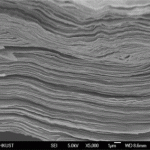
Spontaneous formation of liquid crystals in ultralarge graphene oxide dispersions
A novel process is developed to synthesize graphene oxide sheets with an ultralarge size based on a solution-phase method involving pre-exfoliation of graphite flakes. Spontaneous formation of lyotropic nematic liquid crystals is identified upon the addition of the ultralarge graphene oxide sheets in water above a critical concentration of about 0.1 wt%. It is the lowest filler content ever reported for the formation of liquid crystals from any colloid, arising mainly from the ultrahigh aspect ratio of the graphene oxide sheets of over 30 000. It is proposed that the self-assembled brick-like graphene oxide nanostructure can be applied in many areas, such as energy-storage devices and nanocomposites with a high degree of orientation.

Comparison of GO, GO/MWCNTs composite and MWCNTs as potential electrode materials for supercapacitors
We report the synthesis of graphene oxide/multi-walled carbon nanotube (MWCNT) composites employing an alternative and novel approach for possible application as supercapacitor materials in energy storage devices. Integrating these nanostructures resulted in a strong synergistic effect between the two materials consequently leading to a robust and superior hybrid material with higher capacitance compared to either graphene oxide or MWCNTs. Specific capacitances of 251, 85 and 60 F g−1 were obtained for graphene oxide-multi-walled carbon nanotubes, MWCNTs and graphene oxide, respectively, in a potential range from −0.1 to 0.5 V. Most importantly, a 120% increase in capacitance was observed with increasing cycle number at 20 mV s−1. The ease of synthesis and the exceptional electrochemical properties make the use of this nanostructure an attractive, alternative way of designing future supercapacitors in both conventional fields and new emerging areas.

Self assembly of graphene oxide at the liquid–liquid interface: A new route to the fabrication of graphene based composites
Dispersion of graphene in a polymer matrix as mono layers is an important step towards fabricating high performance polymer–graphene nanocomposites. In this paper, a novel method based on Pickering emulsion polymerization has been introduced that assures fine dispersion and enhances loading. The major idea is to use a high affinity of graphene oxide (GO) for assembly at the liquid–liquid interface for Pickering emulsion polymerization. A guideline for ensuring stable hybrid colloids of polymer–graphene oxide with an appropriate polymer particle size has been introduced. Then a system of poly (methyl methacrylate) (PMMA)–GO has been selected and the nanocomposites have been made by Pickering emulsion polymerization to examine the theory. TEM studies of the products show various interesting arrangements of PMMA and GO for a different size ratio of nanolayers to polymer particles. The new method paves the way for an environmentally benign process for the production of high quality polymer graphene nanocomposites as it is water-based (no organic solvent is employed) and soap free. Furthermore, resulting hybrid particles were melt mixed with PMMA as a master batch. The resulting nanocomposites with 0.3 wt% graphene showed improved thermal stability and stiffness.
Self-aligned graphene sheets-polyurethane nanocomposites
Processing graphene and graphene polymer nanocomposites in an aqueous medium has always been a big challenge due to the hydrophobic nature of graphene (or reduced graphene oxide) nanosheets. In this work, a waterborne latex of polyurethane has been used both as the matrix material for embedding the graphene nanosheets and as a unique stabilizer to help produce an up to 5 wt% graphene/PU nanocomposites. The graphene oxide/polyurethane latex aqueous suspension is reduced in-situ using hydrazine, without any trace of aggregation/agglomeration upon completion of the reduction process, which would otherwise have occurred severely were PU not present. A highly aligned nanostructure is produced when graphene content is increased beyond 2 wt%, resulting in a remarkable improvement in electrical and mechanical properties of the nanocomposite. The exceptionally low electrical percolation threshold of 0.078%, as well as 21-fold and 14 fold increases in tensile modulus and strength, respectively, have been attained thanks to the alignment of graphene nanosheets in the polymeric matrix.

Characteristics of polymers that stabilize colloids for the production of graphene from graphene oxide
There is an increasing interest to find cost-effective methods to produce graphene. It is common to produce graphene from the reduction of graphene oxide colloids. The key to this method’s success and producing graphene layers is having stable colloids of graphene and graphene oxide. The objective of this paper is to study the characteristics of a polymeric stabilizing agent that ensures stabilization of both graphene and graphene oxide. After providing a theoretical basis for selecting a proper polymer, experimental evaluations are performed to show that only proper polymers with the right molecular weight can serve as the stabilizing agent for both graphene and graphene oxide.

















